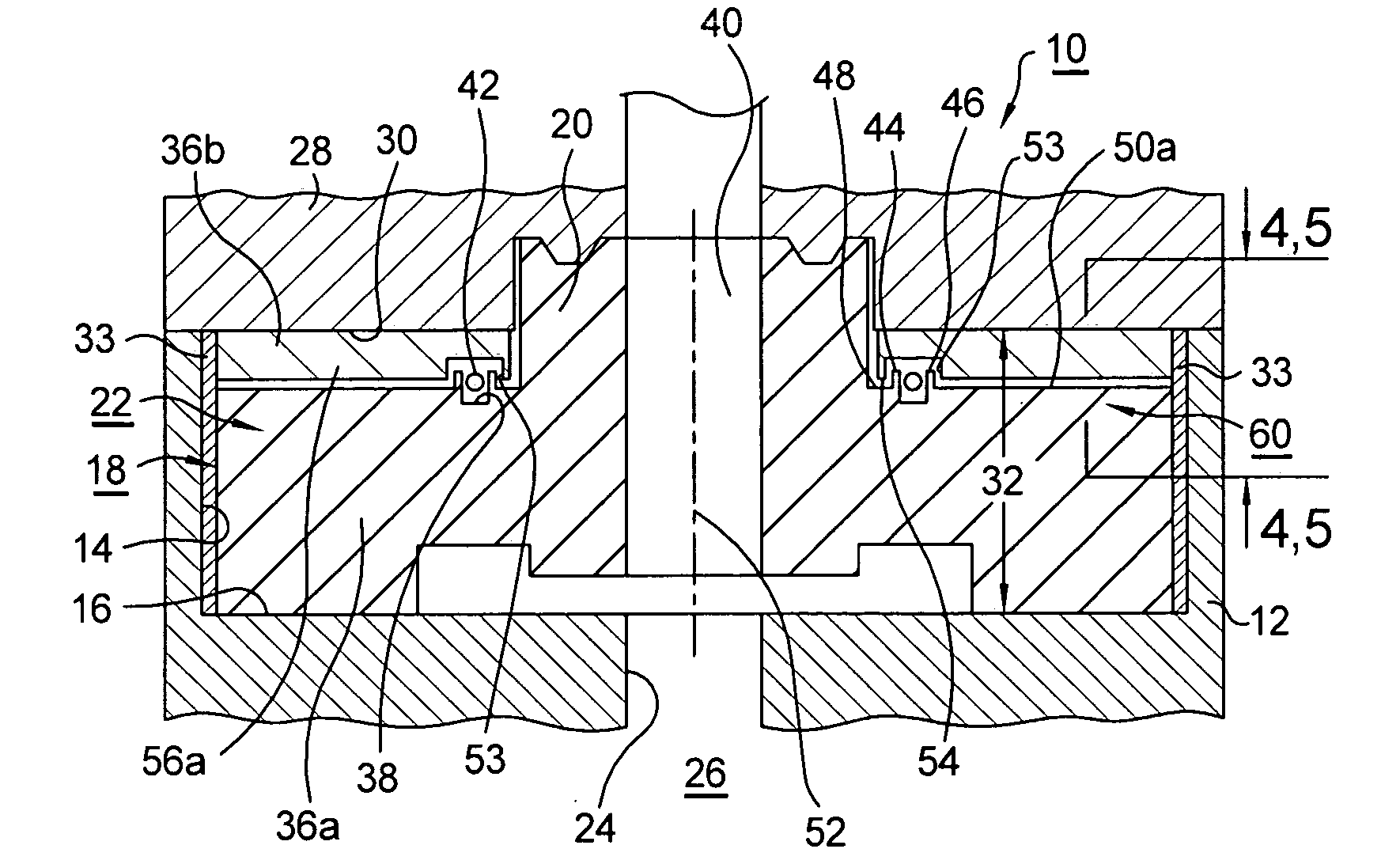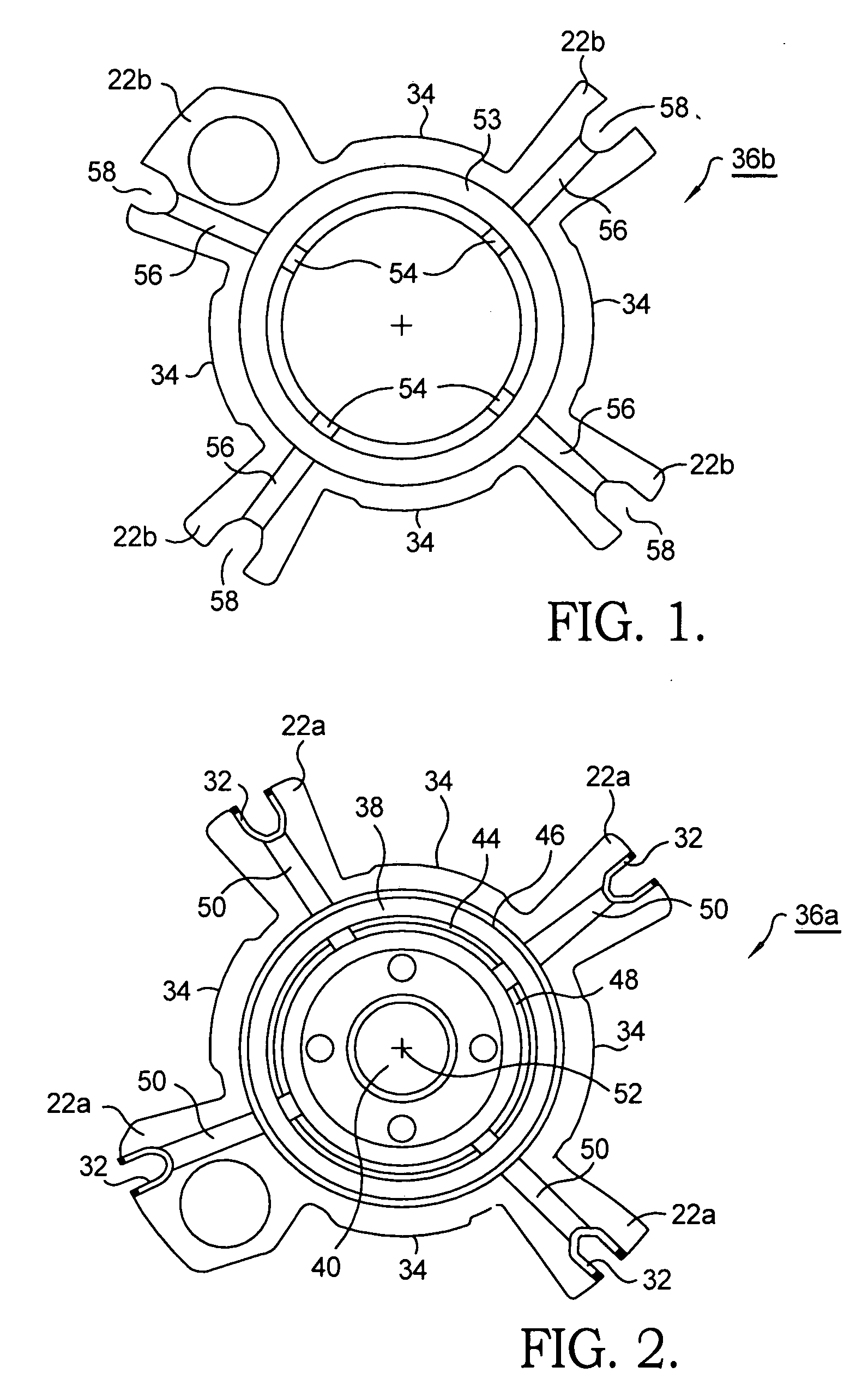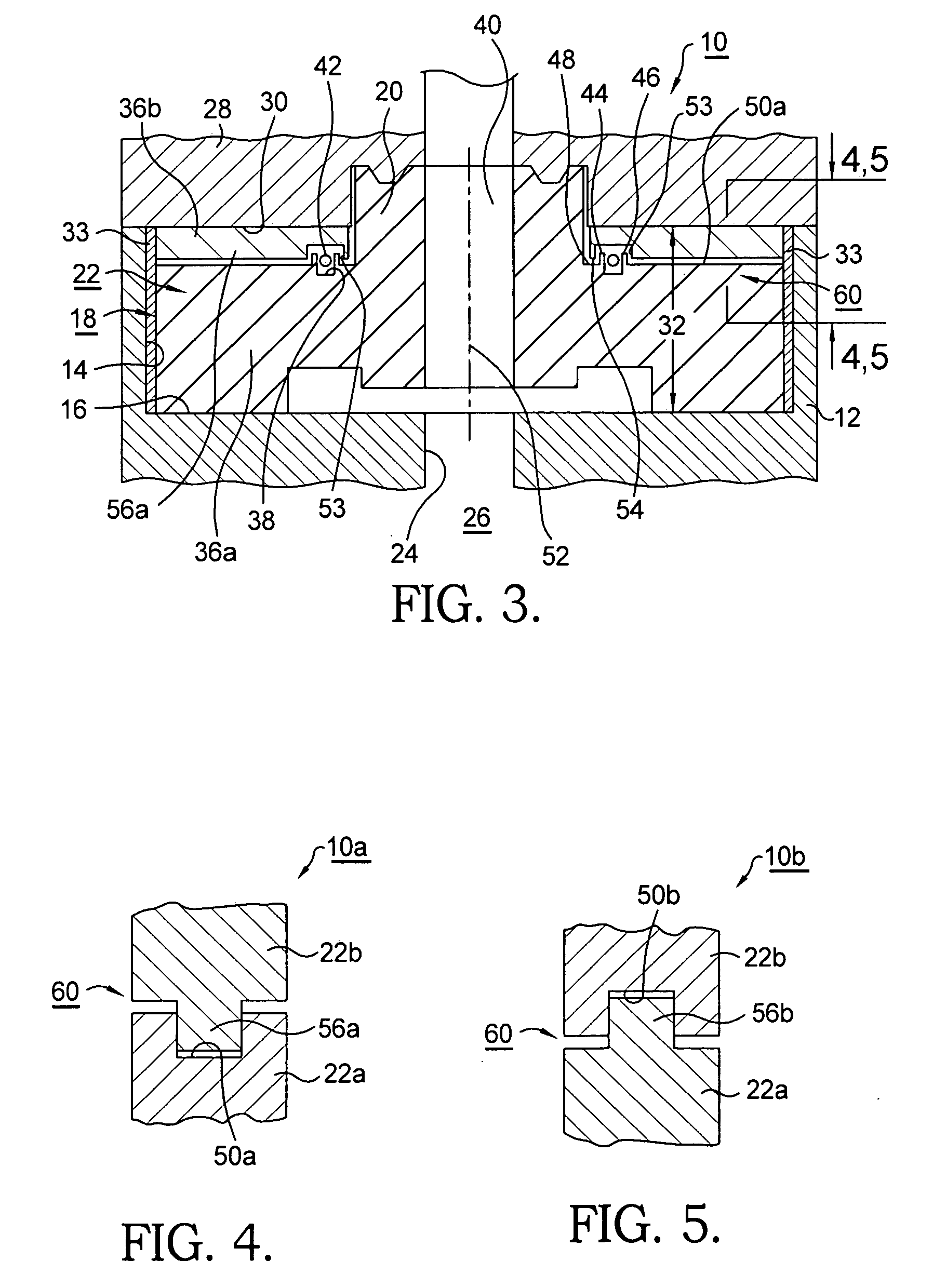Axial lash control for a vane-type cam phaser
a technology of axial lash control and camshaft, which is applied in the direction of yielding couplings, valve arrangements, couplings, etc., can solve the problems of preventing oil leakage, reducing the efficiency of the axial lash control, so as to prevent circumferential oil leakage and prevent oil leakage
- Summary
- Abstract
- Description
- Claims
- Application Information
AI Technical Summary
Benefits of technology
Problems solved by technology
Method used
Image
Examples
Embodiment Construction
[0016]Referring to FIGS. 1 through 3, an improved vane-type camshaft phaser 10 in accordance with the present invention comprises a pulley or sprocket and stator 12 for engaging a timing chain or belt (not shown) operated by an engine crankshaft (not shown). Stator 12 is provided with radial walls 14 and a stator plate surface 16 for receiving a rotor 18 having a hub 20 and vanes 22. Hub 20 is coaxial with a central bore 24 in stator 12, allowing access of an end of an engine camshaft (not shown) into rotor hub 20 during mounting of phaser 10 onto an internal combustion engine 26 during assembly thereof. Stator 12 is closed by a rotor cover plate 28 having a surface 30 opposite stator plate surface 16, forming advance and retard chambers between the rotor and the stator and defining a first height 32. Seals 33 are mounted at the ends of vanes 22 for sweeping radial walls 14 to prevent oil leakage past vanes 22 during operation of phaser 10. Similar seals (not shown) may be mounted i...
PUM
 Login to View More
Login to View More Abstract
Description
Claims
Application Information
 Login to View More
Login to View More - R&D
- Intellectual Property
- Life Sciences
- Materials
- Tech Scout
- Unparalleled Data Quality
- Higher Quality Content
- 60% Fewer Hallucinations
Browse by: Latest US Patents, China's latest patents, Technical Efficacy Thesaurus, Application Domain, Technology Topic, Popular Technical Reports.
© 2025 PatSnap. All rights reserved.Legal|Privacy policy|Modern Slavery Act Transparency Statement|Sitemap|About US| Contact US: help@patsnap.com



